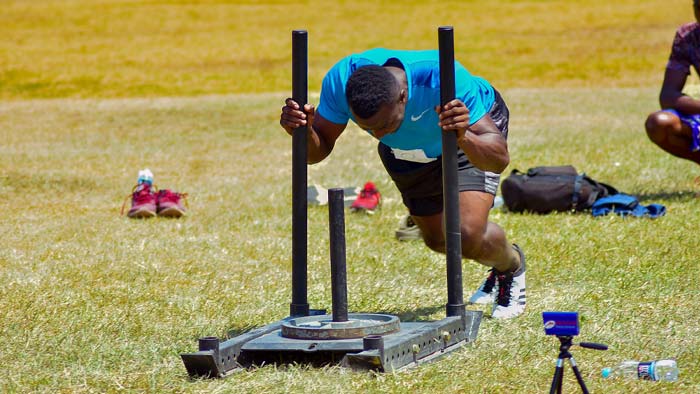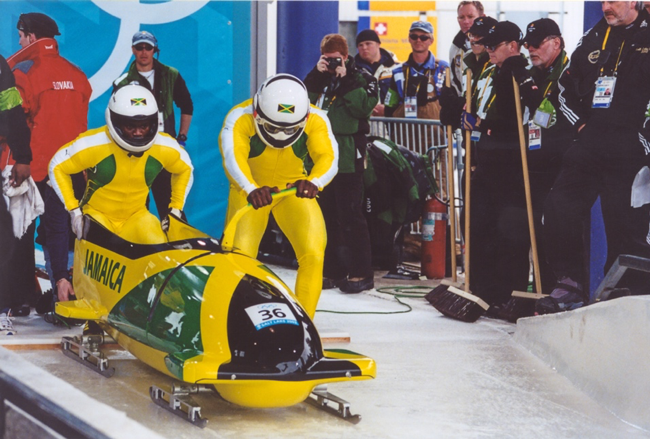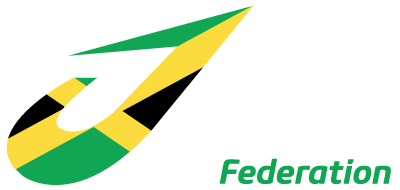sports

Bobsleigh
Bobsledding, also called bobsleighing, the sport of sliding down an ice-covered natural or artificial incline on a four-runner sled, called a bobsled, bobsleigh, or bob, that carries either two or four persons.
Read More
Racing bobsleds have a streamlined cowling in front of the driver to reduce wind resistance. Two types are used: two-person boblets, as they often are called in Europe, and four-person bobsleighs. The bob run used in international competition is between 1,200 and 1,600 metres (1,312 and 1,750 yards) long, with an average slope of between 8 and 15 percent. There are generally from 15 to 20 turns per course, ranging in size up to huge hairpins of more than 180°. Most bob runs have permanent foundations of concrete or stone, which are covered with several inches of ice. The straightaways have sidewalls of reinforced ice about 46 cm (18 inches) high. The large turns are banked very steeply, built up as high as 6 metres (20 feet), and may have an overhanging lip of ice to prevent the fast-traveling bobsleds from flying out of the turn. The start of the race is crucial to a team’s success. Riders, wearing cleated shoes, run alongside the sled, pushing it to achieve maximum velocity. As it builds speed, the riders jump in, the driver in front and the brakeman, pushing the back of the sled, entering last. The heavier four-person sleds attain speeds approaching 160 km (100 miles) per hour; the smaller, lighter two-person sleds are only slightly slower. A race consists of four descents by each team, the total time for the four heats determining the winner.
SKELETON
Skeleton is a winter sliding sport in which a person rides a small sled, known as a skeleton bobsled (or -sleigh), down a frozen track while lying face down and head-first. The sport and the sled may have been named from the bony appearance of the sled.
Read More
Unlike other sliding sports of bobsleigh and luge, the race always involves single riders. Like bobsleigh, but unlike luge, the race begins with a running start from the opening gate at the top of the course. The skeleton sled is thinner and heavier than the luge sled, plus skeleton gives the rider more control making it safer than luge. Skeleton is the slowest of the three sliding sports, as skeleton’s face down head-first riding position is less aerodynamic than luge’s face up, feet-first ride. During elite racing the rider experiences accelerations up to 5 g and reaches speeds over 130 km/h (80 mph). Previously, skeleton appeared in the Olympic program in St. Moritz, Switzerland, in 1928 and again in 1948.[4] It was added permanently to the Olympic program for the 2002 Winter Olympics, at which stage a women’s race was added.


BOBSLEIGH PUSH
The Drag Push event is an innovation of N. Christian Stokes which seeks to combine the excitement of drag car racing with the bobsleigh push event. Two racers line up side by side on their own track, similar to the motor version of the sport, and race down the track, pushing a sled.
Read More
The event serves to create a new sport which showcases the speed strength capabilities of Jamaican athletes on a nationwide basis. This allows for the participation of a large number of athletes in an event that stands by itself. The sport also serves as a recruiting mechanism for the JBSF to identify the best pushers in the islands and converting them to bobsleigh pushers.
DRAG PUSH
The Drag Push event is an innovation of N. Christian Stokes which seeks to combine the excitement of drag car racing with the bobsleigh push event. Two racers line up side by side on their own track, similar to the motor version of the sport, and race down the track, pushing a sled.
Read More
The event serves to create a new sport which showcases the speed strength capabilities of Jamaican athletes on a nationwide basis. This allows for the participation of a large number of athletes in an event that stands by itself. The sport also serves as a recruiting mechanism for the JBSF to identify the best pushers in the islands and converting them to bobsleigh pushers.

